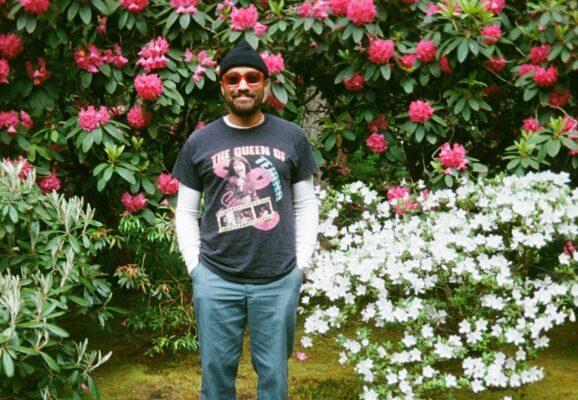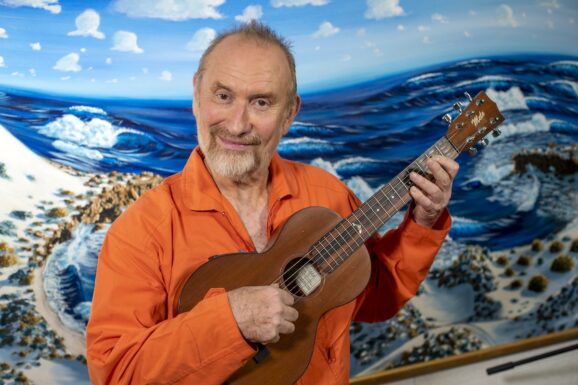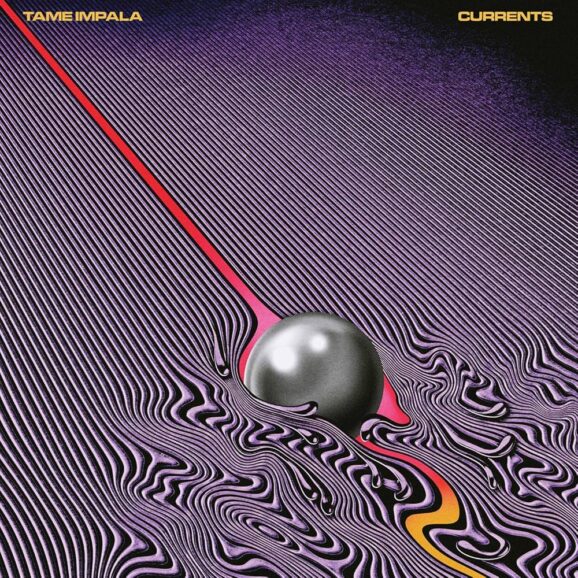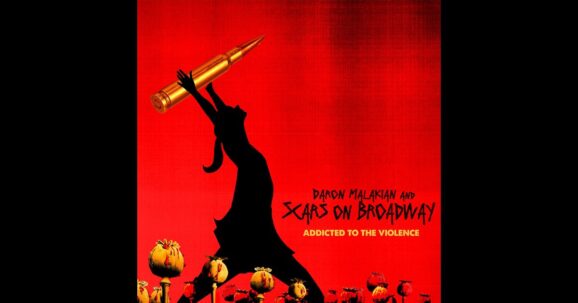 The heated pop and slap of congas that opens the title track of Santana’s Africa Speaks conjure memories of the vintage likes of 1970’s atmospheric Abraxas, a favorable impression that solidifies over the course of the sixty-plus minutes that follows. It’s a far cry from the commercial likes of 1999’s Supernatural with its mainstream hit “Smooth,” and the stable lineup of Santana’s current group (including mainstays in the persons of bassist Benny Rietveld and percussionist Karl Perazzo) mitigates the absence of the original members who reunited in 2016.
The heated pop and slap of congas that opens the title track of Santana’s Africa Speaks conjure memories of the vintage likes of 1970’s atmospheric Abraxas, a favorable impression that solidifies over the course of the sixty-plus minutes that follows. It’s a far cry from the commercial likes of 1999’s Supernatural with its mainstream hit “Smooth,” and the stable lineup of Santana’s current group (including mainstays in the persons of bassist Benny Rietveld and percussionist Karl Perazzo) mitigates the absence of the original members who reunited in 2016.
The group’s playing echoing the sound of the early Santana band without seeming to self-consciously ape it and as on that opener, blistering guitar figures from the namesake bandleader foreshadow his own disciplined playing throughout this record. “Batonga” rolls out in much the same fashion and highlights the main distinction between Santana past and present, that is, the lead vocals: group chants are almost as prominent as the lead vocals of Buika, but her mellifluous tones on “Oye Este Mi Canto,” for instance, add to the exotic atmosphere created in part by largely Spanish lyrics (the translation of which would be an inclusive gesture)
The mesmerizing effect that results is more or less consistent over the course of Africa Speaks’ entire playing time, an impact amplified by the audio presence as recorded at producer Rick Rubin’s Shangri-la studio (originally built for use by Bob Dylan and the Band) and mastered by the expert Stephen Marcussen. Another facet of this record reminiscent of classic Santana albums like III, the mix somewhat surprisingly sublimates Cindy Blackman Santana’s drumming at her kit, but “Paradisos Quemados” reveals how her playing supplies ballast for the fluid movements of the rest of the ensemble.
One of the more conventional rock tunes here (like all eleven numbers an original piece), “Yo Me Lo Merezco” benefits from the depth and clarity of the sound: electric guitar chords melt in and out of David K. Matthews’ Hammond B3 organ. It’s a tribute to Carlos’ overriding humility that, on arrangements of cuts like that and “Blue Skies,” he shares the instrumental prominence with the keyboardist, whose piano is as much the center of gravity of the latter performance as the instrument of Santana’s. The tranquility of the closing passages conjured by these two bandmates is quite the dramatic foil for the tempestuous dual guitars immediately preceding and a welcome change of pace for an album that by its very uniformity threatens to become monotonous just past the half-way point.
The appearance of Ray Greene’s trombone is thus all the more welcome on “Breaking Down the Door” and “Los Invisibles;” close to unobtrusive, the sound of the horn nonetheless adds a novel texture to further highlight how the lead singing on Africa Speaks becomes an instrument unto itself. Clearly the collaboration between Carlos Santana and producer Rubin, the man who co-founded Def Jam Records (and has worked with the disparate likes of Run DMC, Slayer and Tom Petty) is a mutually fruitful one, because right through to the conclusion, “Candome Cumbele,” this record sounds all the more potent for its cooperative focus.</span










2 Responses
Ok, I think Carlos is one of the all time greatest guitar players, but…
This is pseudo-African trash.
You are correct that it is reminiscent of earlier works, mostly that awful “Love Devotion Surrender” slush with McLaughlin.
Please Carlos, stop trying to prove how mystically connected you are.
“Shut up ‘n play yer Guitar!”
This record will not appeal to English speaking rednecks. It is made for the citizens of the world. Those that love diversity and equality. Beautiful music.